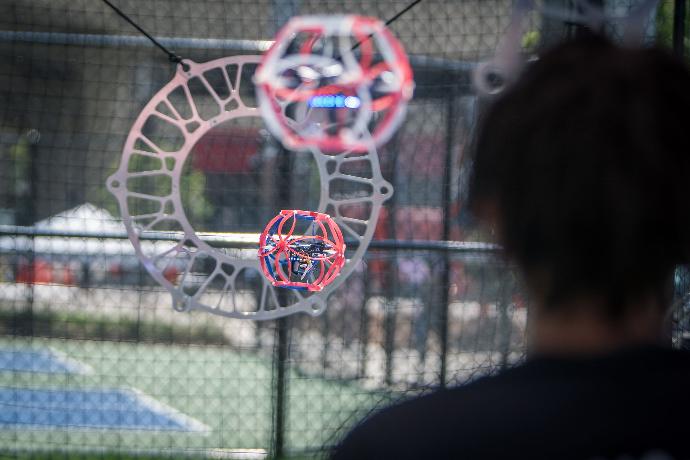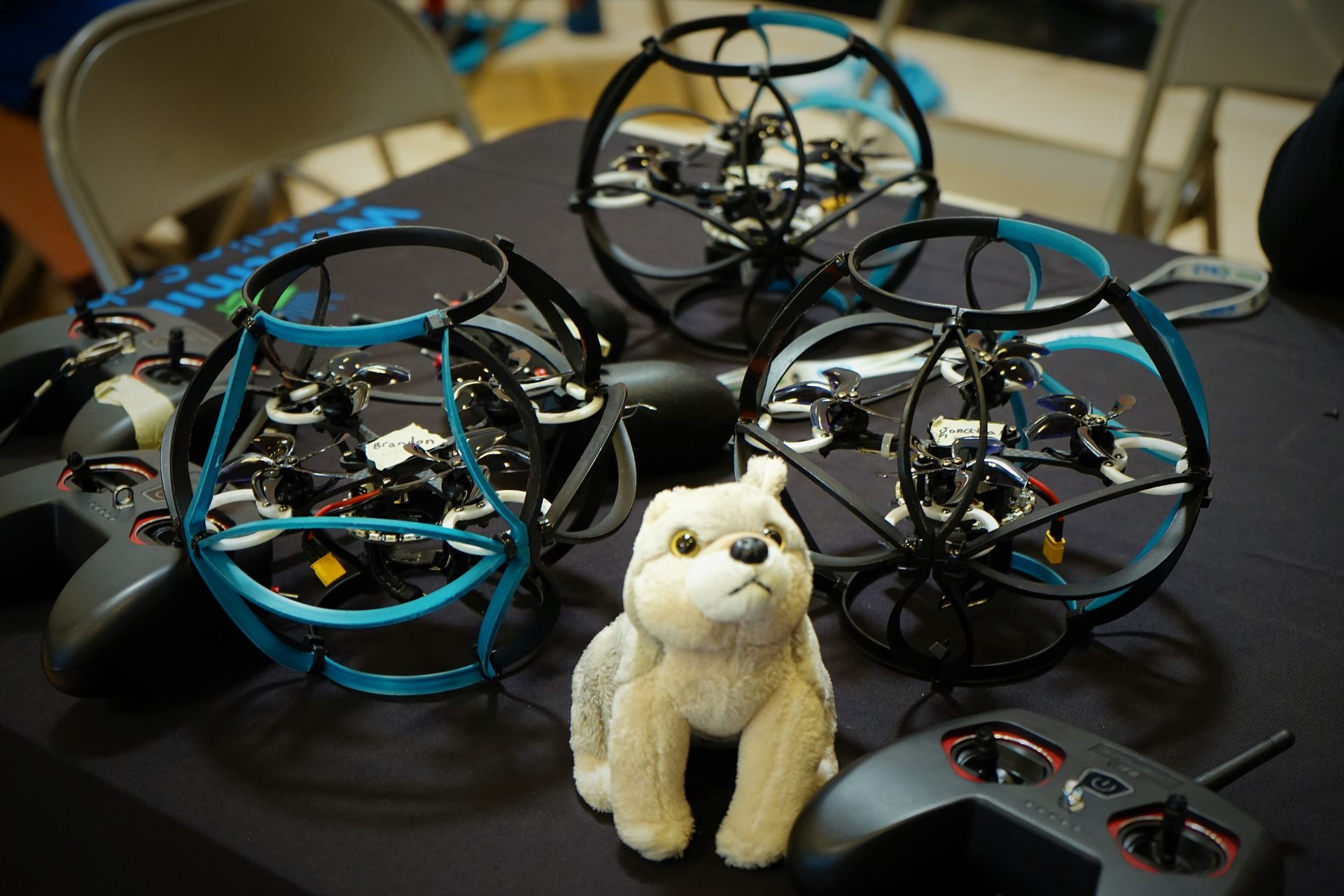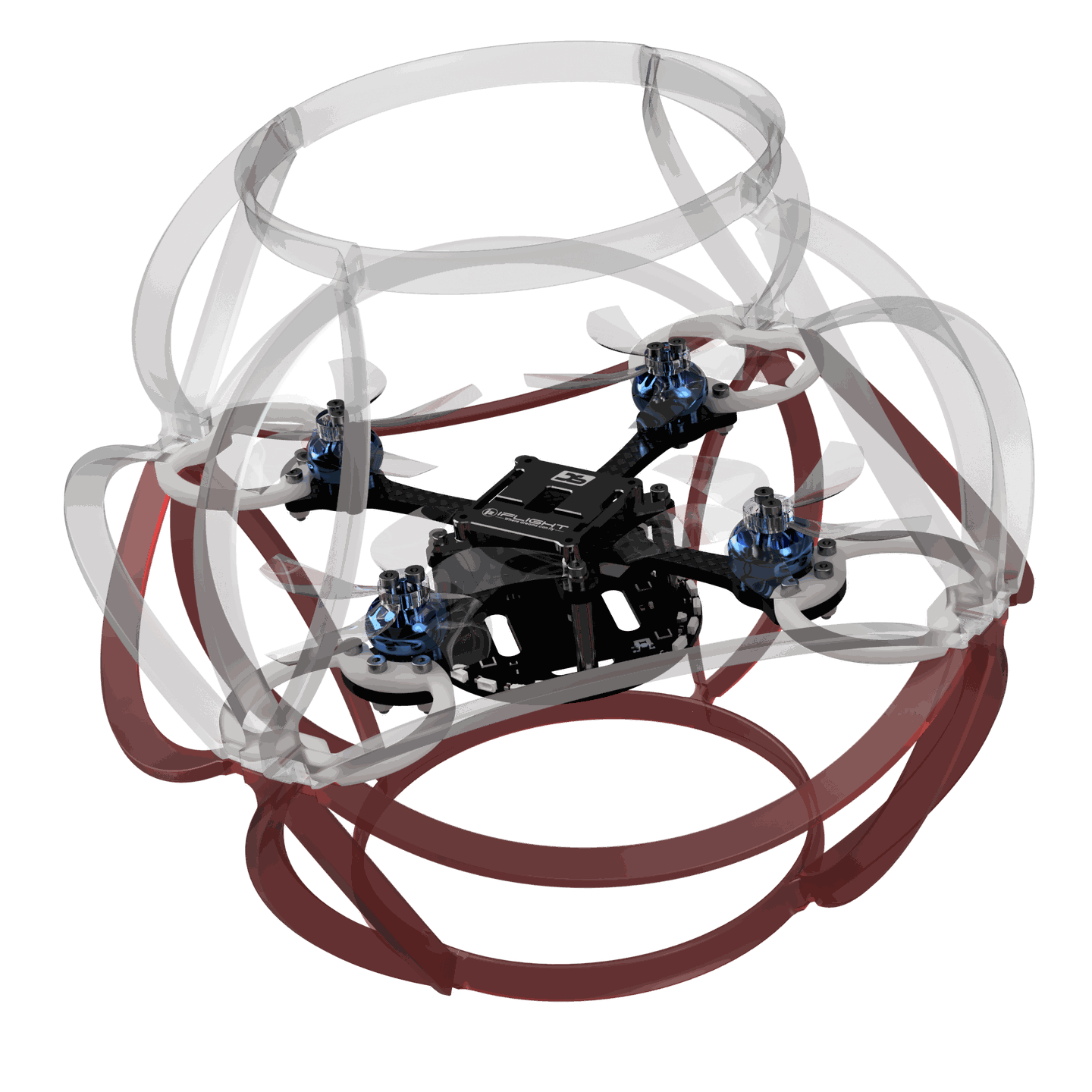U19 Drone Soccer Rules
Code of Conduct
Fielding Diverse Coed Teams
All teams must intentionally create and maintain a welcome and supportive environment for new pilots, and ensure equal representation and participation of all genders, abilities, and communities that have been historically excluded from aviation.
Respect and Anti-Harassment
All players have the right to equal participation and respect without fear, bullying, intimidation, or belittlement. U.S. Drone Soccer maintains a zero tolerance policy for bullying, racism, bigotry, and sexual harassment. All officials and coaches have a duty to immediately report known or suspected situations involving a minor that are unsafe or inappropriate. It is a violation of this policy to retaliate against any person who asserts their rights regarding harassment.
Safe Aircraft Operation
Each pilot and crew member must take responsibility for the condition and operation of their drones and equipment. All flights should be conducted in a netted arena or designated practice area. Reckless flight or intentional damage to other teams or players will not be tolerated. Each participant, students and teacher, must practice good situational awareness to ensure the safety of themselves and others.
Integrity & Fair Play
Teams cannot interfere with the equipment or operations of other teams. Examples of prohibited activities include radio frequency interference or jamming, hacking, distraction, disruptive chatter, eavesdropping, or tampering with equipment in any way.
Anonymous Reporting
Mirroring practices in professional aviation, all concerns about unsafe situations or inappropriate conduct can be anonymously provided to league administrators. Please include your contact information and a description of your concerns to [email protected]. Personally identifying information will be kept confidential unless prior consent is obtained, or the situation involves a suspected crime or threat to public safety that must be reported to law enforcement.
U19 Aircraft Classification
The Saker DS200 "Bantam" Drone Soccer Ball is a high-performance aircraft designed to meet all World Air Sports Federation (FAI) International Drone Soccer F9A-B (20cm) sporting codes. You may modify or compete with any drone as long as it falls within the following specifications:

Aircraft
- Maximum Total Weight: 300g
- Exoskeleton Diameter 20cm ± 2 (7.9in)
- Maximum Base Truncation: 2cm
- Batteries: 3S or 4S (number of cells in each battery)
- Max Voltage Per Battery Cell: 4.2V
- Max Propeller Diameter: 7.6cm (3in.)
- Radio Control (RC) Spectrum: 2.4 GHz
Battery
- 3S-4S Lithium Polymer Drone Racing Battery
- Discharge Rate: 75C or higher
- Capacity: Recommended 650mAh (4S) or 850mAh (3S)
- Wiring Harness: 11-18V DC Power XT30 Connection
Teams
Active Players
Rostered Players per Team
Sets per Match
Team Composition
Drone Soccer is a coed (mixed) sport and teams must maintain a diverse and inclusive roster. A regulation Match is played by five active players. Six is the recommended team size. Each roster may have a maximum of ten players and ten drones (maximum of two per player).

Team Identification
To assist in team identification, assemble drones so that ¾ of cage panels are one color, with the rear cage panels in a second color. If dividing equipment between two teams then have one team with white cages and a red rear panel, and one team with red cages and white rear panel. Remember that the rear penal should always correspond with the USB port on the Saker DS200 “Bantam” aircraft.
Competitive teams should paint their exoskeleton cages using a plastic paint. The rear panel should be a bright secondary color to aid in visual orientation of the drone. LED’s should be similarly patterned with a team color on the front and sides of the drone. LED’s should be programmed to change to a similar but distinct Striker pattern using a radio switch. Tail light colors correspond to each pilots' position below.
Positions
There are five positions in Drone Soccer each with unique identification and responsibilities. The Striker and Forward are offensive drones designated with special flags. The remaining three defensive drones are the Center, Sweeper, and Keeper. Only the Striker is able to score by flying through the opponents goal. If the Striker is damaged, the Forward can tag the Striker on the ground and assumer the Striker position.

Keeper
White

Sweeper
Yellow

Center
Blue

Forward
Red

Striker
Green
Drone Soccer can be played by teams of equal size (5v5). Each team roster must be coed and may have a maximum of ten players. The 5 active players are referred to as "Pilots", nonflying players are "Crew".
Broken propeller blades can depart the arena at high speeds. Players and referees should wear glasses or protective eyewear when in the vicinity of the arena during active gameplay.
Each Match consists of 3 Sets. The duration of each set is 3 minutes. A 3-5 minute repair countdown between Sets allows for battery exchange, aircraft repair, and substitutions. Thirty minutes are allotted for each Match.
The winner of each Match is determined by the best of three Sets. The team that scores the most points in the allotted time will be awarded that Set. Teams will play all three Sets for ranking purposes. In the event of a tied Set resulting in a tied Match, the winner of the Match will be decided by Sudden Death in extra time (the first to score wins).
Teams are responsible for ensuring their drones are ready to fly, and that they have enough charged batteries (four per player) before each Match.
-
Teams will clearly designate a Striker before each Set using lighting and/or flags.
-
Teams may place a backup drone ball in the staging area should one of their drones be unable to arm.
-
Teams who do not have drones ready to fly after a warning can elect to fly short handed or will otherwise forfeit that Set.
Other Requirements:
-
Only active players are allowed in the pilot area during gameplay.
-
Substitutions can not be made during a Set, but unlimited substitutions can be made from the roster between Sets.
-
Players may not swap radio controllers during gameplay.
All drones should be placed on the staging table with batteries strapped on, but not connected. The referee will enter the arena and place the drones in the starting zone. The referee will call “Radios On” to remind pilots to ensure that their radios are ready.
-
Two attempts can be made to connect the drone before exchanging for a spare.
-
Do not arm drones balls until commanded by the referee.
-
Once both teams are ready, the referee will exit and command pilots to “Arm Your Drones!”
At the starting signal, pilots lift off and begin play.
A point will be awarded each time a Striker successfully flies through their opponent’s goal in the forward direction. The drone must pass completely through the goal. The Striker cannot pass backwards through the goal in an attempt to score. Other drones that fly through the goal will not be awarded or penalized.
Misconduct - Players, coaches, and spectators must exhibit respectful conduct at all times. Officials may remove participants from the Match or Tournament for infractions or violations of the Code of Conduct.
Controlled Flight - Drones must be flown under control to the best of a player's ability. Reckless flight that intentionally causes damage may result in penalties and/or removal from the game. Damaged or disabled drones should be immediately disarmed to prevent further damage.
Interference - Only the referee can physically interact with drones within the Arena. No player, coach, or spectator may interact with a drone through the arena netting.
Early Start - Players will arm but remain on the ground until the start signal begins the Set.
Offsides - After a successful goal, the striker and all teammates must retreat back across the centerline before attacking again. No point will be awarded until all active teammates have all cleared the attack zone. Disabled drones are not counted.
Direction of Flight - The striker can not fly through the other team’s goal from the back. Defenders may not hover within the goal, or fly through the goal in the reverse direction. All drones who enter a goal must fly out and around to return to play.
For a violation of the above rules, a Penalty may be awarded by the Referee.
-
Penalties may result in Penalty Shots in extra time following each Set.
-
Ten seconds will be allotted for the striker to attack against a single defender.
-
The striker may attempt multiple goals.
-
Penalty Shot time will not be counted against Set elapsed time.
-
At the conclusion of the ten second penalty all other drones can resume play.
Players must weigh the risk of damage with how aggressively they fly. A damaged drone must be immediately disarmed and that team will fly shorthanded for the remainder of the Set.
If a striker is disabled:
-
Players will immediately notify the Referee.
-
Referee will stop play and all drones will land.
-
The referee will swap flags to a backup striker.
-
Play will resume with remaining drones from current positions.
Drones who are stuck upside down must utilize “turtle mode” to flip over, or have a teammate bump assist to roll the drone to upright for flight.
If a drone is stuck against the arena, notify the referee who will free it. Do not interact with a drone through the net. The referee may choose to pause the game to assist a stuck drone.